The hotel that inspired the Titanic's dining room
The architect behind the phrase ‘dolling it up’; plus, some thoughts on rewatching James Cameron’s classic
“Up, up, up past the Russell Hotel/ Up, up, up, up to the Heaviside Layer” - Andrew Lloyd Webber, “Cats” Musical
“Then, as they sat there talking, a faint grinding jar seemed to come from somewhere deep inside the ship. It was not much, but enough to break the conversation and rattle the silver that was set for breakfast the next morning.” - Walter Lord, A Night to Remember (1955)
In London’s Bloomsbury neighborhood, it’s totally possible to feel like you’re walking alongside ghosts. A 20-minute stroll allows you to pass the former residences of luminaries such as Virginia Woolf, Charles Darwin, and John Meynard Keynes.
But the Kimpton Fitzroy, a hotel across from Russell Square, allows you to transport back to Edwardian England, and if you squint your eyes, you feel like you’re back in the Titanic’s first-class dining room. And the hotel is one of my favorite places to stay in London.
This week marks the 113th anniversary of the Titanic’s tragic sinking, so I decided to mark the occasion to talk about its connections to this hotel and its architecture.
First-class dining for the Edwardian rich

The first-class dining room, located midship on D-Deck, was a spacious, wood-paneled room painted white, and could seat more than 500 passengers. According to Titanic Clock, the neoclassical pilaster columns were likely adorned with Ceres and Neptune heads. (Much of what we know about the Titanic’s description is because of its identical surviving sister ship, Olympic, which had more photos taken of it). The seats were green and brown, with polished oak arms and legs. The floors were lined with red, blue, and gold-patterned linoleum tiles (marble would have made the ship too heavy).
It was a room to socialize for the 1%. As Walter Lord wrote in his gripping 1955 account of the sinking in A Night to Remember:
“There was a wonderful intimacy about this little world of the Edwardian rich. There was no flicker of surprise when they bumped into each other, whether at the Pyramids (a great favorite), the Cowes Regatta, or the springs at Baden-Baden. They seemed to get the same ideas at the same time, and one of these ideas was to make the maiden voyage of the largest ship in the world.”
Dolling it up in Bloomsbury
The architect, Charles Fitzroy Doll, based the Titanic’s first-class dining room design on his existing hotel’s restaurant in Bloomsbury, the Hotel Russell (now part of the IHG chain and known as the Kimpton Fitzroy, which takes its name in part after him). Doll1 was known for decadent architecture – according to the Fitzroy, the phrase “dolling it up” has its origins with his hotels’ elegance, which included the then-Hotel Russell and its neighbor, the Imperial Hotel. Hotel Russell also got a nod in Andrew Lloyd Webers’ “Cats” musical as one of the last sights the cats would see before ascending to heaven.2

I’ve had a chance to stay at the Kimpton Fitzroy a couple times, and it is a really elegant hotel. The dining room has the same style columns, plastering, and open seating as the Titanic. Here are some dining room photos from my stays in Dec 2022 and March 2024.3
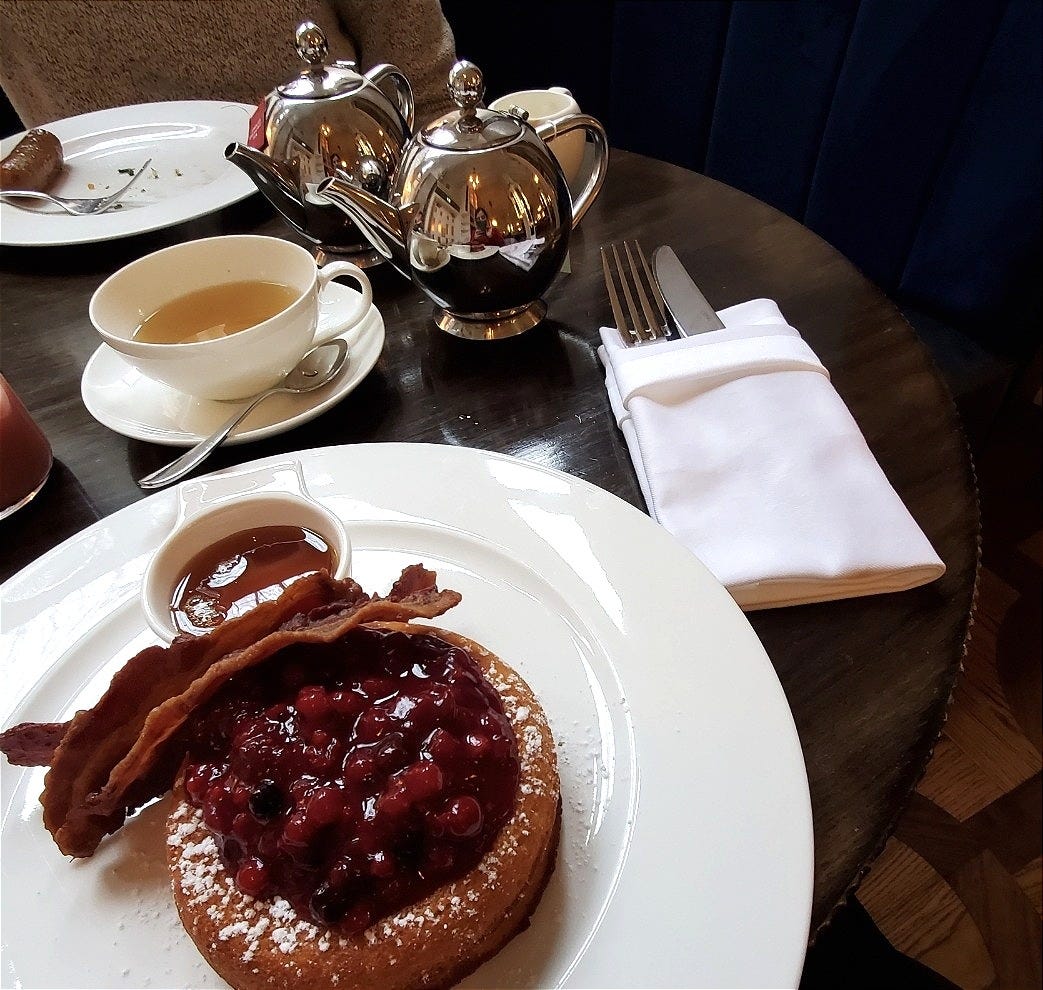
It’s a room for people-watching. It’s a room that has some updated furniture, but ultimately is a refuge against the ultra-modern. And it is a room that feels like the self-actualization of what good design should be.
Sometime in 2018, before it was acquired by IHG, the Principal Hotel Company did a renovation on the dining room. I really like this iteration of it below (known as Neptune’s), especially the fabric shade lighting which look similar to Viennese architect Adolf Loos’ 1920s dinner chandeliers. 4
Here are some more photos of the hotel from during my stays. Note the Gothic style, cafe au lait terracotta marble, and zodiac tiles:
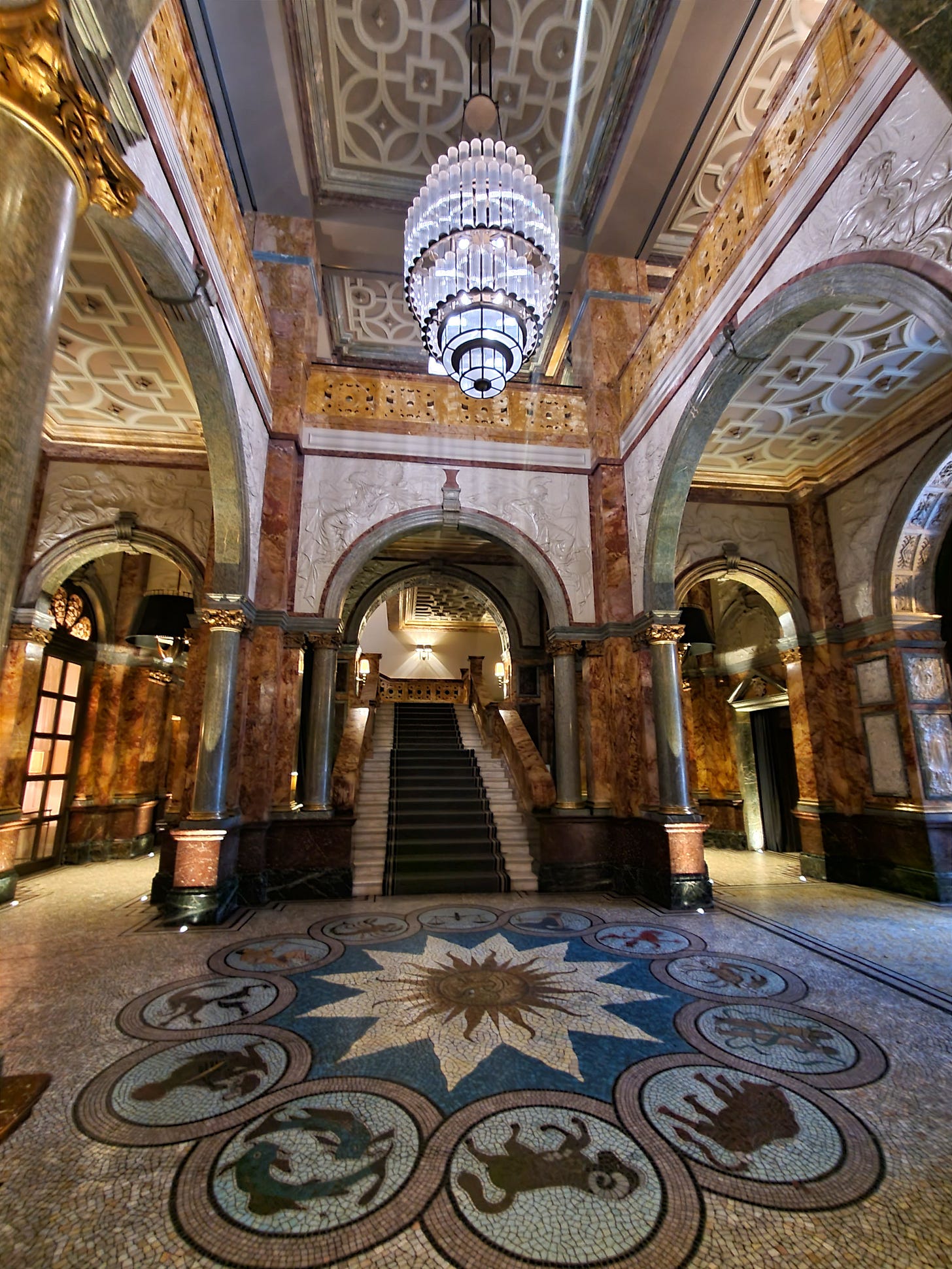
Finally, in the main stairwell of the hotel, there’s a statue of a dragon named “Lucky George.” Apparently Doll had two dragon figures commissioned, and one was placed in the hotel and the other on the Titanic — hence the “lucky” in this George’s name.
In writing this, I thought a lot about whether architecture —or art in general — that was funded and enjoyed primarily by the first-class rich can be enjoyed today, when wealth disparity remains an ongoing societal fracture. It’s a tricky debate, and I don’t have fully-set answers on how to address this on a personal level (though I know some museums, such as the Tate Britain, have worked to be transparent on the history of their past benefactors, many of whom made their wealth in slavery).
But I think there is something about the mood-lifting clarity of certain environments. Alain de Botton writes about the significance of well-designed spaces in The Architecture of Happiness, and how aesthetic virtues like order, balance, and complexity can be pleasing to our psyches and mental health. I think these words can also apply to public spaces for travelers:
“It has provided not only physical but also psychological sanctuary. It has been a guardian of identity. Over the years, its owners have returned from periods away and, on looking around them, remembered who they were.”
Revisiting Titanic (1997)
I rewatched James Cameron’s Titanic a couple times as part of my research for this post, and I was struck by how well it still holds up on the following:
Masculinity and class
The emotional/physical abuse of first class vs the “positive masculinity” and freedom of third class. Jack and Fabrizio represent a healthier form of masculinity that makes way for female autonomy. Every conversation Cal has with Rose is about her following certain rules, whereas with Jack it’s about what she wants to do with her life, and following her lead. Jack checks in on Rose’s safety but does not pressure her to choose him; Fabrizio asks his dance partner if it’s okay to put his hand on her waist when they dance. Cinema Therapy has a great video about this movie that expands on these themes.
Narrative symmetry
Similar to how The Studio’s Seth Rogen says that audiences love a bookend, here are several callbacks that I think are emotionally pleasing on rewatch.
Jumping. In the first meeting with Jack, she faces certain physical death by jumping from the ship when it was thought unsinkable. Later, she evades a spiritual death by jumping from a lifeboat onto the sinking ship. Rose chooses to go toward Jack in both situations.
Sharp objects. Molly Brown jokes “You gonna cut her meat too for her, Cal?” to Rose later wielding an axe to cut Jack’s handcuffs.
The color purple. Rose’s look gets softer as the movie goes on. Her updos turn into undone locks, her clothes become more free, and the color palette becomes more romantic (like the Monet water lilies she admires). Similarly she boards the ship in a dark purple hat, and leaves the ship wearing a lavender dress. During a tea session, her mom Ruth says Rose picked lavender for her bridesmaid dresses just to spite Ruth, who hates the color. On the last night, Rose wears a lavender dress when she says goodbye to her mom forever!!!

Bill Paxton. He is in Titanic (as a modern-day shipwreck hunter) and stars as himself in James Cameron’s documentary Ghosts of the Abyss (where they both go down in a submersible to see the shipwreck irl). His Titanic character’s arc is to finally feel the gravity of the tragedy and to prioritize living; in the documentary, all of that definitely weighs on him. Paxton’s voice is so soothing and his fear of potentially dying in that submersible is so relatable!
Extended reading
Food options on the Titanic by class | Titanic Belfast
All the deleted scenes from the 1997 movie. I think they made the right call to cut these | YouTube
This entire channel has a bunch of Titanic-related content, but I found this video about going overboard on a cruise super interesting | Oceanliner Designs
This site is very 1997, but I did enjoy this fanfic of speculating what happened to Rose’s mother Ruth | Karen Lewis, Angelfire
On a final note - I visited the Halifax Maritime Museum last summer in Nova Scotia (Halifax recovered many of the Titanic’s dead, as well as remnants of the ship). The museum has some artifacts from the sinking, including this recovered archway that hung in the first-class entrance to the lounge. Take a look at that intricate woodwork — the musical instrument motif was a nod to the performances in the lounge.
Other Loose Buttons posts you may enjoy
The symbolism of Ingrid Bergman’s clothes in Casablanca
The killer interior design of Hitchcock’s Rope
The Bloomsbury Group’s influence on interiors and fashion
I looked everywhere for a photo or portrait of this guy, but no avail
not a sponsored post by any means - I just really love this hotel lol.
I have been tracking these chandeliers online but have not found an original or replica below $5k








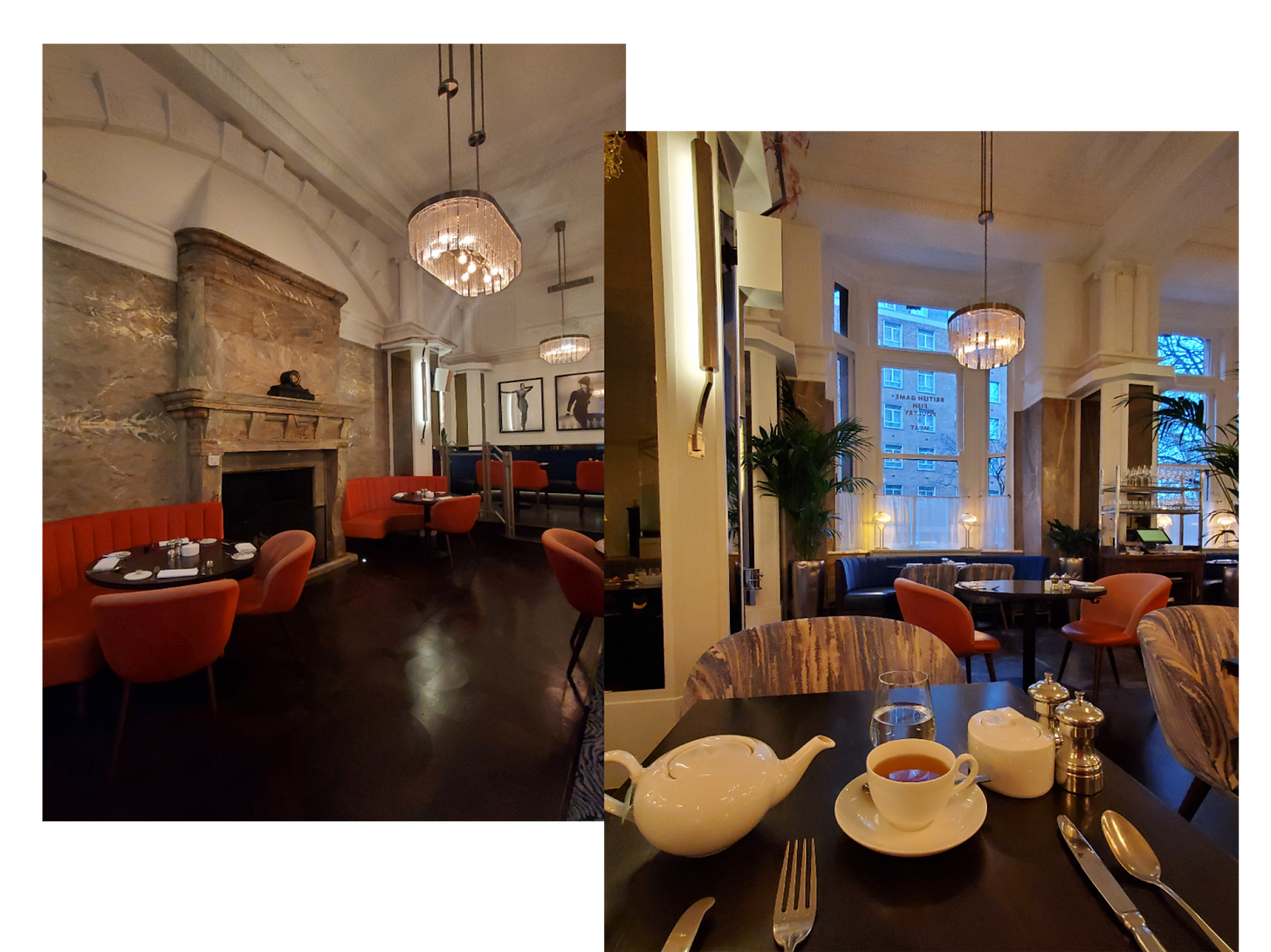

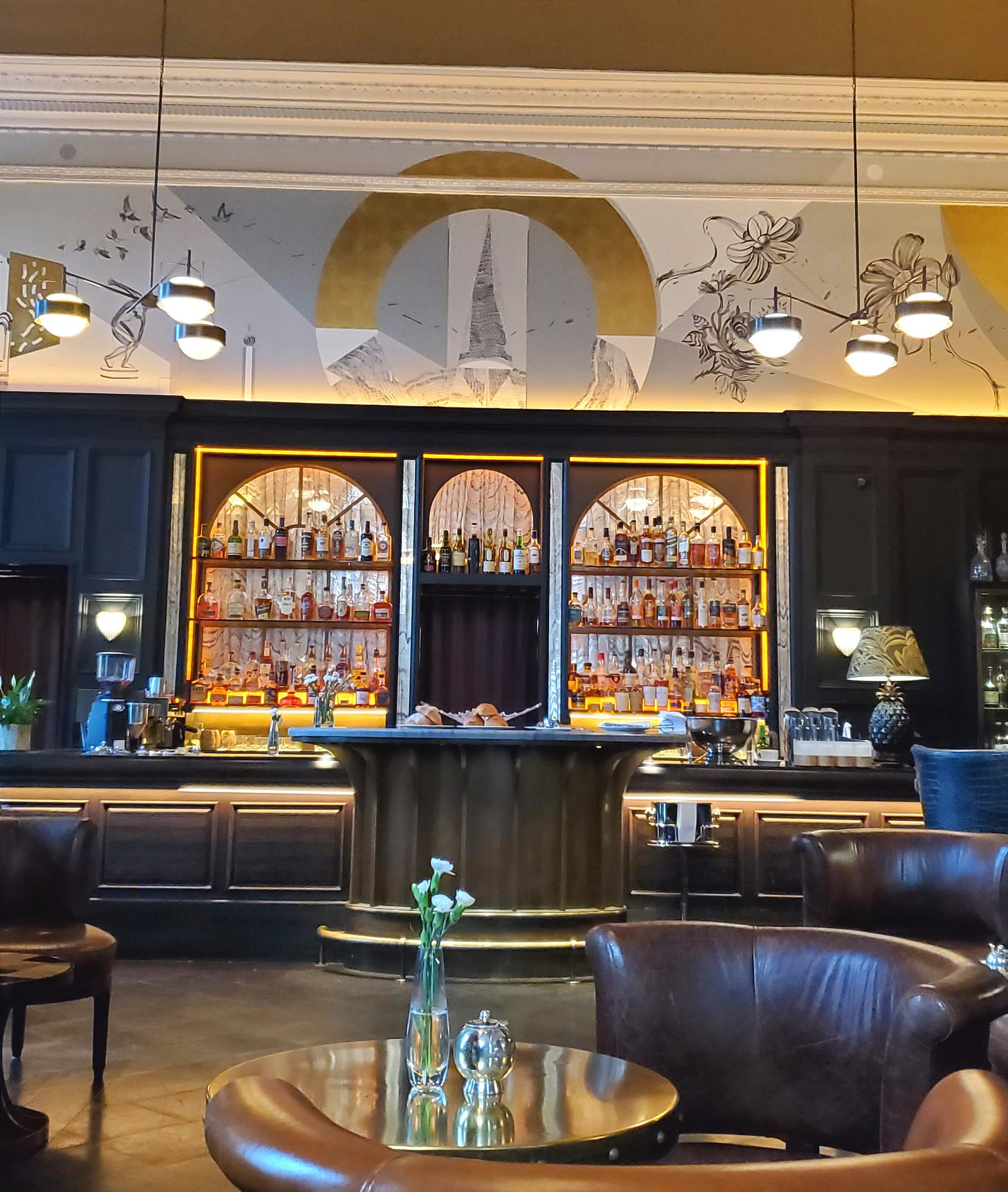
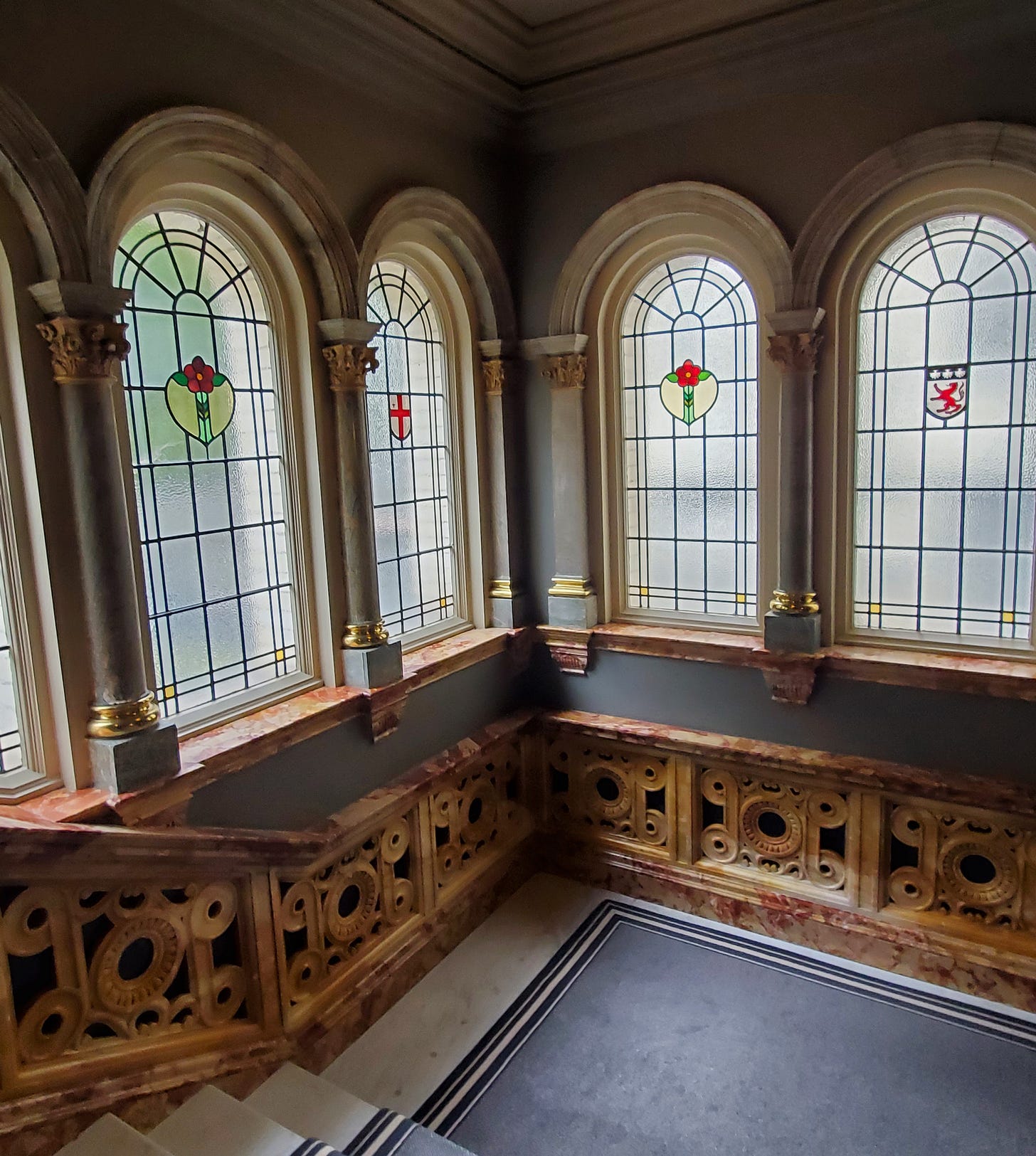





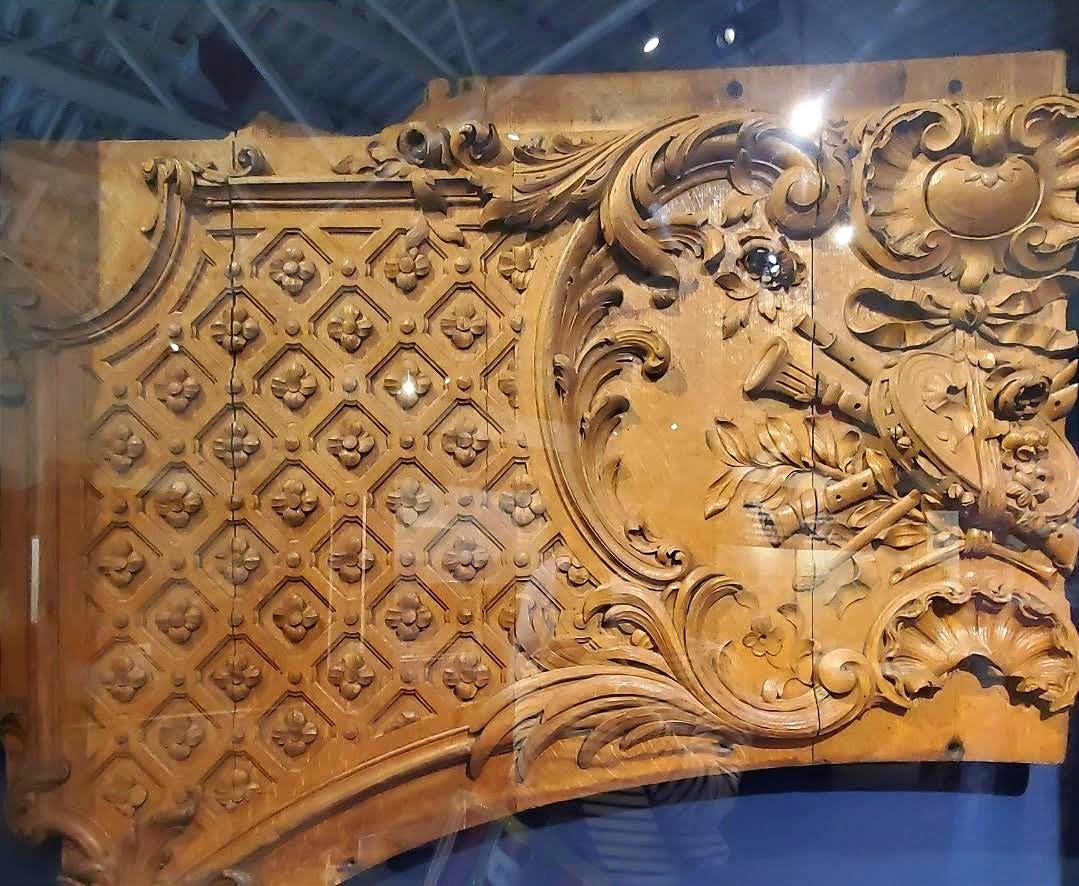
love how you had personal photos on hand for this post! so timely, and i will also say, being on a cruise last week and realizing it was the anniversary of the sinking was...unsettling but also kinda funny when we decided to watch the first half of the movie one night. we turned it off right before the watchmen's eyes change from happy to horrified as they started to see the iceberg.